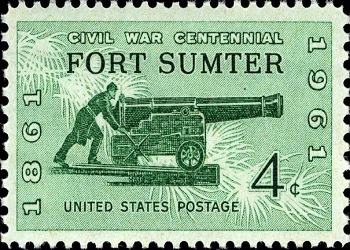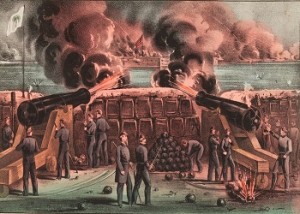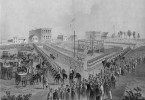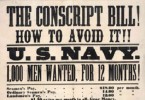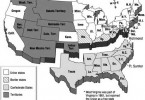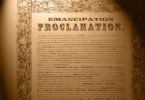How did the Civil War start?
After Lincoln’s election as president on November 6, 1860, seven southern states seceded from the Union forming the Confederate States of America. These states were: South Carolina, Florida, Mississippi, Alabama, Georgia, Louisiana and Texas. The President of the Confederation was Jefferson Davis and the Vice President Alexander H. Stephens. They did not agree on Lincoln’s stance on slavery.
In December 1860, Union Major Robert Anderson transferred his troops from the shorelines in Charleston to Fort Sumter. His troop of 200 was attacked by South Carolina’s troops forcing them to retreat. South Carolina seized all Federal property in Charleston except for Fort Sumter. Lincoln’s commitment to maintaining the Union was absolute, as stated in his inauguration speech. Resupplying Fort Sumter became the first crisis of the administration. In March provisions and reinforcements were sent to secure the fort. On April 12, 1861 Fort Sumter was attacked by Confederate forces and Major Anderson was forced to surrender. The Civil War had began.
After the attack on Fort Sumter, Northerners were euphoric; patriotism was boiling to its highest point to keep the Union together. The north had 20 million citizens and the south 9 million, including the upper south states. Many were convinced in the superiority of the Union’s army and predicted the war to last a few months.
Abraham Lincoln issued a Proclamation Calling Militia and Convening Congress. He called for 75,000 men and a special session of Congress. Democrats and Republicans supported the president. Northern states promptly filled their quotas with volunteers. There were thousands of men willing to risk their lives for the integrity of the Union.
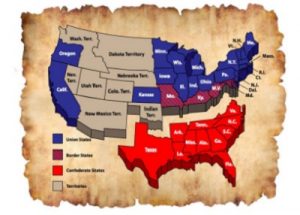
Map showing Confederate States (red), Border States (purple), Territories (gray) and Union States (blue).
After Lincoln’s call for volunteers Virginia, North Carolina, Tennessee and Arkansas joined the Confederacy. Border States such as Kentucky, Missouri and Delaware refused to provide troops and Maryland refused the passage of northern troops through its territory. Four soldiers of the Sixth Massachusetts Regiment were killed on their way to protecting the Nation’s capital and Lincoln threatened to return the attack if soldiers were attacked first. For nearly a week Washington was under siege, the railroad that had access to the District of Columbia was under control of the Confederates as well as telegraph lines. Troops from the 7th New York Regiment had to circumvent Baltimore to reach Washington. Within a week order was established.
In the Proclamation of Blockade against Southern Ports issued on April 19, Lincoln sent orders to blockade ports of 7 Confederate states to cripple their economy, expanded the US Army and ordered the enlistment of 18,000 seamen. On May 3 he ordered additional volunteers for 3 years. To the President the Confederacy did not exist, he could never negotiate or recognize a treaty. Decisions that needed approval of Congress were circumvented. The emergency situation of war required the President to act before authorization. He considered the war a primarily function of the Chief Executive. He suspended the privilege of habeas corpus which became a great controversy in congress. In the following years the writ of habeas corpus was suspended in locations where secession was in danger. Lincoln had the full support of Congress which was dominated by Republicans; 32 out of 48 members in the Senate and 106 out of 176 in the House of Representatives.

